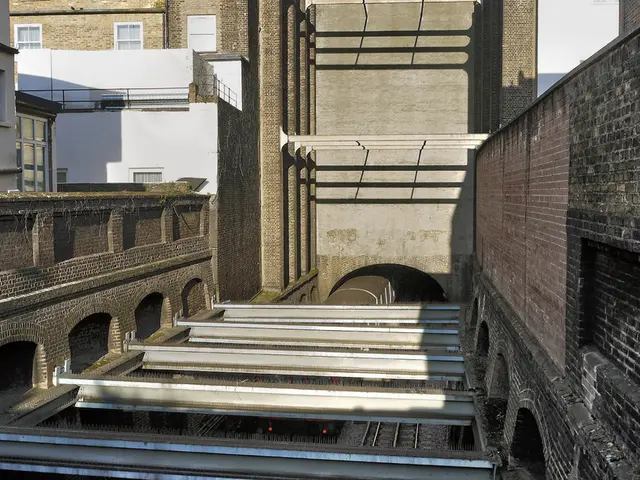A Hazardous Discovery in Berezhnaya Cave: Implications for the Akhtyrskaya Karst System and Surrounding Ecosystems
Unveiling the Contamination Extent
Speleologists in Sochi discovered 200 cubic meters of hazardous waste hidden within a cavern
In the heart of the Akhtyrskaya karst system lies Berezhnaya Cave, a geological wonder hidden deep within the village of Ermolovka. However, a recent discovery has cast a shadow over its pristine beauty. Speleologists from the Sochi Geographical Society unearthed a makeshift dump site within the cave, containing approximately 200 cubic meters of household waste, chemicals, and animal remains.
The toxic substances found in Berezhnaya Cave include the banned pesticide DDT and its metabolite, raising concerns about its impact on the local ecosystem. Preliminary soil and water samples have shown the presence of these toxic substances, indicating possible illegal dumping of hazardous waste.
Assessing the Environmental Risks
The discovery in Berezhnaya Cave underscores the need for immediate action to address the environmental concern. The Akhtyrskaya karst system's water flows into an underground river, which then flows into regional waterways from Psou to Host. The presence of DDT and its metabolite in Berezhnaya Cave highlights the potential risks to the underground river system and the surrounding ecosystems.
The toxic substances found in Berezhnaya Cave pose a serious threat to human health. Scientists have warned that the situation could become critical due to the discovery of the dump site, emphasizing the importance of proper waste management in protected natural areas.
Taking Action to Preserve the Akhtyrskaya Karst System
To address the issue, a series of measures have been taken:
- Monitoring and Assessment: Regular hydrogeological monitoring programs have been established to track contaminant levels in the Akhtyrskaya karst system. Use of tracer dyes and isotopic analysis helps map pollution pathways within the system.
- Containment Efforts: Removal or secure encapsulation of known waste deposits is underway where possible. Engineered barriers are being installed to limit pollutant migration.
- Remediation Actions: Groundwater treatment technologies, such as in-situ bioremediation and filtration systems, are being applied. Soil excavation and replacement are being carried out in severely affected areas.
- Policy and Regulation: Stricter controls on hazardous waste disposal in karst regions are being enforced. Environmental protection zones are being developed around the Akhtyrskaya karst system.
- Community and Stakeholder Engagement: Education campaigns are being conducted to raise awareness about karst vulnerability. Local residents are being involved in monitoring water quality.
Looking Ahead
The full restoration of the affected karst ecosystem remains complex due to natural geological conditions. Continuous funding and inter-agency collaboration are required for effective long-term monitoring. Further research into advanced remediation technologies tailored for karst environments is crucial. Implementation of comprehensive land-use planning to prevent future contamination is essential to safeguard the Akhtyrskaya karst system and the surrounding ecosystems.
The environmental impact of the illegal dumping in Berezhnaya Cave extends beyond just the local ecosystem, as the Akhtyrskaya karst system's water flows into regional waterways, raising concerns about climate-change implications for these areas. Such environmental disasters underscore the need for increased regulations and financial investment in environmental-science research to develop solutions for managing and disposing of industrial waste in a sustainable manner. Moreover, it is essential that the public, including local residents, be educated about the importance of preserving pristine ecosystems like Berezhnaya Cave to ensure their protection for future generations.





